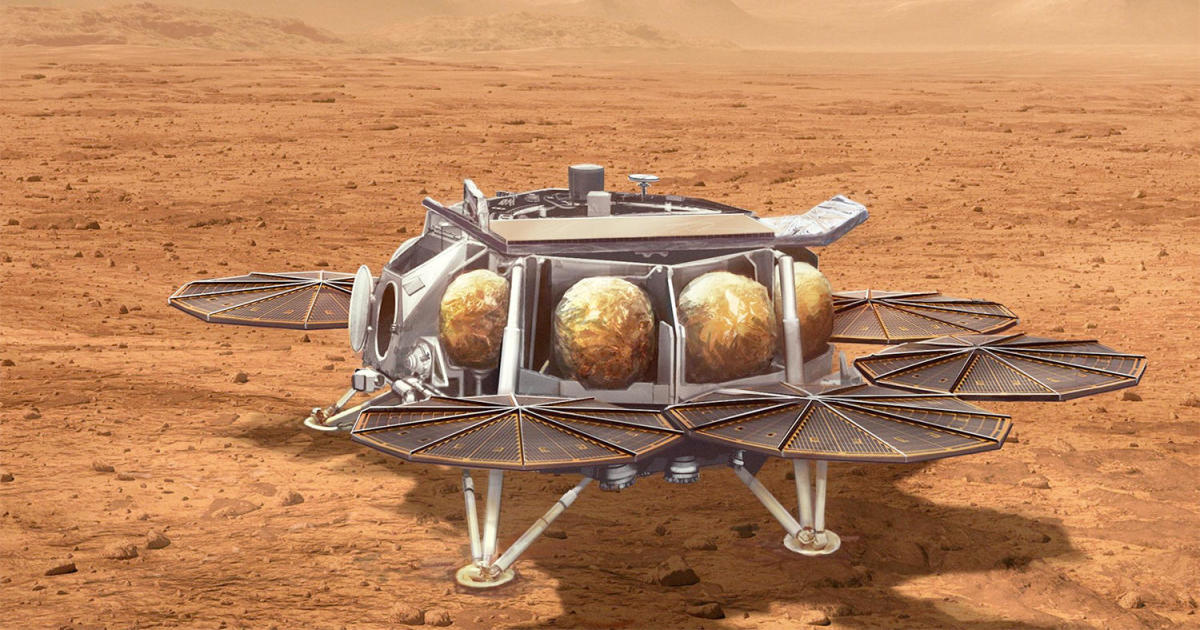

NASA is exploring two key options to significantly reduce the cost and accelerate the timeline of its ambitious Mars Sample Return (MSR) mission: simplifying the mission architecture and leveraging commercial partnerships. The original plan, a complex multi-mission endeavor involving multiple spacecraft launches, has proven both expensive and time-consuming. These new strategies aim to streamline the process and inject crucial private-sector innovation. Option 1: Streamlined Mission Architecture This approach focuses on simplifying the intricate sequence of launches and maneuvers. Instead of relying on a complex series of independent spacecraft (a Mars Ascent Vehicle, an Earth Return Orbiter, and potentially others), NASA is investigating a more integrated design. This could involve a single, more robust spacecraft capable of performing multiple functions, perhaps combining the ascent vehicle and a sample-transfer mechanism into a single unit. This reduction in hardware complexity would translate to lower manufacturing, launch, and integration costs. Further streamlining might involve using less sophisticated landing systems, potentially accepting a higher degree of risk in exchange for significant cost savings. However, this requires careful risk assessment to ensure the precious Martian samples are not jeopardized. Option 2: Increased Commercial Partnerships NASA is actively seeking greater involvement from commercial space companies in the MSR mission. This strategy recognizes the burgeoning capabilities of private industry in areas like launch services, spacecraft construction, and navigation. By outsourcing elements of the mission to proven commercial partners, NASA could dramatically reduce its internal costs and leverage the private sector's efficiency and innovative technologies. This could include contracting the design and manufacturing of individual spacecraft components, or even delegating entire mission phases to capable commercial entities. This approach, however, requires careful oversight and management to ensure mission integrity and alignment with NASA's scientific goals. The selection of trustworthy and qualified partners will be crucial. Both options, when implemented individually or synergistically, could represent a significant shift in how NASA approaches ambitious deep-space missions. While the streamlined architecture offers cost reductions through design simplicity, the commercial partnerships strategy promises efficiency and innovation gains by tapping into the private sector’s resources and expertise. Ultimately, the success of these strategies will depend on careful planning, effective risk management, and a continued commitment to bringing Martian samples back to Earth for scientific analysis. The choice between these options, or a hybrid approach, will likely be influenced by a thorough cost-benefit analysis and a rigorous assessment of technological readiness levels.

After an independent review concluded NASA's plans to and return rock and soil samples from Mars could cost up to $11 billion, NASA "pulled the plug" and is focusing on two options to reduce costs and speed up the return of the samples, agency Administrator Bill Nelson said Tuesday.
Option one would use the same "sky crane" landing system proven with NASA's Curiosity and Perseverance Mars rovers, a smaller sample collection spacecraft, a smaller rocket to boost the samples into orbit around the red planet and a European Space Agency spacecraft to capture them and fly them back to Earth.
The plan is similar to but less technologically challenging than the original architecture that was ruled out and a sample return in the 2040 timeframe. Option one would cost between $6.6 billion and $7.7 billion and get the samples back as early as 2035 or as late as 2039, depending on congressional funding.
Option two would rely on companies like SpaceX, Blue Origin or others to provide a "heavy" Mars landing craft that could deliver the sample collection spacecraft to the surface, along with the Mars Ascent Vehicle needed to blast the collected samples to orbit where the ESA spacecraft would capture and return them to Earth.
As with option one, the timeframe for sample return would be the mid- to late 2030s.
In both cases, the sample collection spacecraft would rely on a radioisotope thermoelectric generator, or RTG, instead of solar panels, making the craft immune to sunlight-blocking dust storms while keeping the solid propellant in the MAV from getting too cold.
"NASA is going to explore two potential options, architecture possibilities," Nelson said. "The decision over the course of time, with all the engineering that has to go into it, the final decision (on which option to pursue) is likely to come in 2026."
He said he had not discussed the mission replanning with the Trump administration or the administrator-nominee Jared Isaacman and does not know what level of support they might bring to the table.
"But I think it was a responsible thing to do, not to hand a new administration just one alternative," Nelson said. "If they want to have a Mars sample return, which I can't imagine that they don't, I don't think we want the only sample return coming back on a Chinese spacecraft."
He called a planned Chinese effort a "grab-and-go kind of mission whereas ours has been a very methodical process ... to find different samples of different layers showing different ages of material and rocks."
He was referring to the agency's Perseverance rover, which landed on the red planet in February 2021 and has been across the floor of Jezero crater, an ancient, dried-up lakebed once fed by a rushing river. The sediments may hold evidence of past microbial life.
The samples, Nelson said, will provide a history "of what Mars was like millions of years ago when there was water in the lake, water coming down that river, and the big question, was there life millions of years ago? So I think the (incoming) administration will certainly conclude they want to proceed. What we wanted to do was to give them the best possible options."
He said the Senate currently is budgeting $200 million for ongoing development of the Mars Sample Return mission in NASA's fiscal 2025 budget. The House number is $600 million. Whatever number is eventually agreed on, Nelson said NASA will need at least $300 million in the final budget.
"And if they want to get this thing back earlier, they're going to have to put more money into it, even more than $300 million in fiscal year '25, and that would be the case every year going forward," Nelson said.
In September 2023, an independent review board concluded the original multi-spacecraft sample return mission could cost as much as $10.9 billion, $4 billion to $5 billion more than originally expected. And even at that price, the mission would be stretched out and samples would not get back to Earth before 2040.
"we pulled the plug on it," Nelson said, and announced NASA was seeking fresh ideas from agency engineers, researchers and the private sector to come up with alternative mission designs to reign in the costs and to get the samples back to Earth earlier.
As originally envisioned, the Mars Sample Return mission, or MSR, was the most complex robotic planetary science mission ever attempted, one requiring a new NASA sample retrieval lander, one or more small helicopters to aid in sample recovery and a powerful solid-fuel rocket to launch the collected samples to orbit.
Once in Mars orbit, the sample container would be collected by the European Space Agency and returned to Earth for detailed laboratory analysis.
NASA originally hoped to launch the MSR mission, at a cost of nearly $6 billion, in 2028. But in September 2023, the independent review board concluded the project was not feasible given current budget projections, unrealistic schedules and a management structure that was not up to the task of getting the spacecraft ready for launch in time.
The review panel concluded the project almost certainly could not get off the ground before 2030 and could cost between $8.4 billion and $10.9 billion depending on the final mission architecture.




